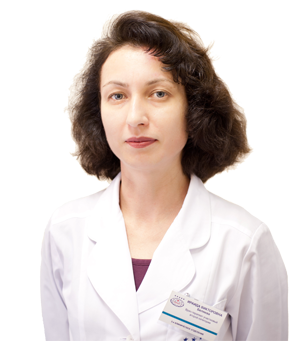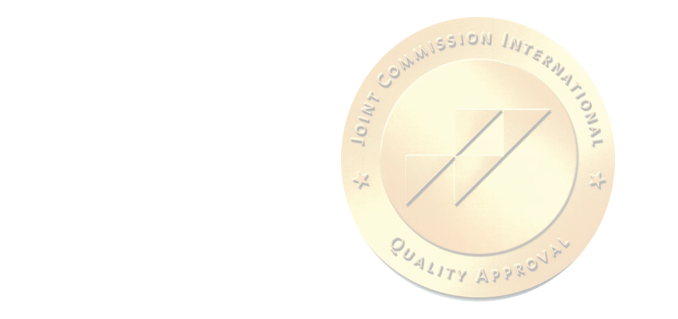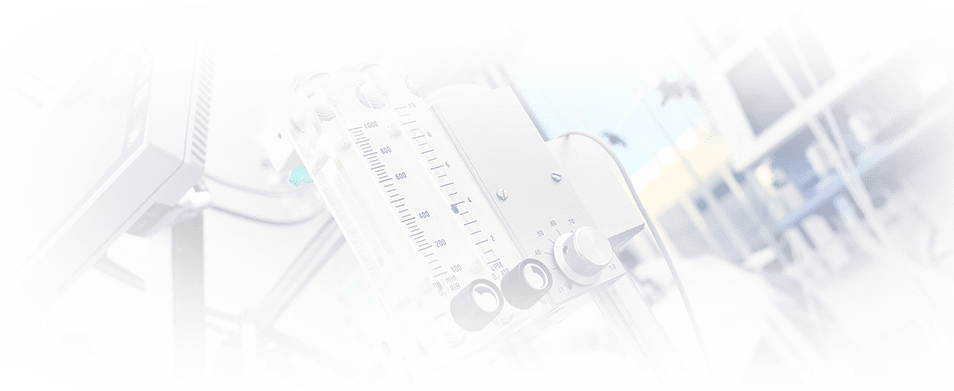Hepatitis c

Precinct therapist
Belyaeva Iraida
Experience 22 year
Precinct general practitioner of the highest category, member of the Russian Scientific Medical Society of Physicians
Hepatitis C is a disease caused by a virus that can spread through blood from one person to another. The hepatitis C virus (HCV, aka HCV) was first identified relatively recently - in 1989. Pathology mainly affects the liver, which threatens it with damage and the appearance of functional failures in the work of this vital organ. Over a significant period of time, it is possible to progress to serious liver damage (fibrosis, cirrhosis) or, in some cases, to cancer (hepatocellular carcinoma).
On the territory of the post-Soviet space, the opinion persists that hepatitis C is incurable, and its outcome is inevitably fatal. There are two main reasons for this misconception. First: insufficient medical literacy of the population. Second: until a certain time, drugs for this disease were difficult to obtain due to their high cost and shortage. Yes, the price of such drugs is still relatively high today, but in comparison with previous years, it has decreased by orders of magnitude. Every year, new generations of more and more effective and affordable medicines are being created, so hepatitis C is not a death sentence! Successful treatment is not a myth, but a reality, confirmed by the facts of the recovery of thousands of patients!
Symptoms and signs of hepatitis C
The incubation period (from the moment of infection to the onset of symptoms) lasts from 2 weeks to 6 months, most often 45-60 days.
The main danger of this form of hepatitis lies in the difficult diagnosis at an early stage. The reason for this is the complete absence of symptoms or their meager, insignificant manifestation. The patient for a long time may not present any complaints or not pay due attention to them due to their low intensity. In addition, such symptoms are "disguised" as signs of other diseases, such as a rise in temperature with a cold or general malaise with a sharp change in the weather. Patients may experience:
- increased sweating (especially at night);
- increased body temperature, chills;
- arthralgia (aches, joint pain);
- loss of appetite, nausea (up to the aversion to food);
- heaviness in the epigastric region;
- soreness in the right hypochondrium (due to stagnation of bile or inflammation of the gallbladder);
- violation of concentration, distraction;
- fast fatiguability;
- spider veins, itching, rash;
- digestive disorders (constipation, diarrhea);
- light-colored stools, discolored;
- dark urine;
- moderate increase in liver size;
- general weakness, dizziness.
All of the above signs do not appear together, but separately, occasionally. In some cases, the skin becomes yellowish (jaundice), which quickly passes. In the later stages of liver damage, the development of encephalopathy, ascites (dropsy, accumulation of fluid in the abdominal cavity), hemorrhages due to portal hypertension is possible.
Diagnosis in hepatitis C
To begin with, the doctor collects an anamnesis, that is, conducts a conversation with the patient in order to find out various factors - belonging to a risk group, the presence of complaints, their intensity, duration, frequency, possible route of infection. In order to confirm or refute suspicions of infection, the following laboratory tests are carried out:
- A blood test for the presence of antibodies to HCV - makes it possible to find out if the virus has been in the body before. Some people get rid of the virus naturally due to innate immunity, without medical attention. Antibodies may not be detected for 8-9 weeks in patients with acute hepatitis C or with severe immunodeficiency;
- PCR test (polymerase chain reaction) - detects the RNA of the virus, its presence in the body at the moment, that is, whether the patient is infected with HCV;
- Biochemical blood tests to determine the level of bilirubin, liver enzymes (alanine aminotransferase (ALT), alanine aminotranspeptidase (AST)). Help assess liver functionality;
- Tests to clarify the genotype of the virus and viral load - are necessary before starting antiviral therapy to assess the likelihood of achieving a persistent virological response and determine the duration of the course of treatment;
- Ultrasound examination of the abdominal organs (ultrasound), if necessary - computed tomography (CT), magnetic resonance imaging (MRI).
In some cases, a liver biopsy is prescribed with the aim of taking a tissue sample for further histological examination. Not so long ago, this procedure was considered the standard for determining the stage of hepatitis, detecting other histological lesions (necrosis, steatosis) or excluding other liver diseases (hemochromatosis, etc.). But liver biopsy has a number of disadvantages and limitations. These include:
- invasiveness (trauma);
- the potential for serious complications (bleeding);
- high price;
- difficulties in re-conducting to monitor changes.
Mention should be made of such a phenomenon as a false positive result. This term refers to a positive first blood test in some patients. With further detailed examinations, the diagnosis is not confirmed. This situation is possible due to the presence of other pathologies.
If there is reliable information about contact with the virus or a strong suspicion of the presence of hepatitis C, then the doctor will prescribe a second examination within 6 months. This is due to the existence of a "window" after contact, during which the test will be negative.
Causes of Hepatitis C
HCV - a pathology with bloodborne through the transfer of the pathogen, ie infection occurs through blood. The source is patients with acute or chronic HCV or virus carriers. In the blood, the virus appears 1-3 weeks after infection. Before the introduction of mandatory testing of donated blood for the presence of the hepatitis C virus, transfusion of blood and its components was of great epidemiological importance. Now this path is practically excluded.
Currently, the leading position among the routes of infection is occupied by drug addiction with intravenous (parenteral) administration of drugs. According to WHO statistics, 87.5% of injection drug users have antibodies to HCV.
Other routes of infection include:
- the use of non-sterile instruments for medical procedures (dental operations, surgical interventions, acupuncture);
- violation of sterility during cosmetic procedures (manicure, pedicure, tattooing, piercing, shaving);
- violation of personal hygiene standards (general use of a toothbrush, razor);
- contact with blood in the performance of professional duties (injury with an infected needle, tool, work at the emergency site in the presence of blood);
- unprotected intercourse with a carrier of hepatitis C;
- the path from mother to child during pregnancy or childbirth.
The latter two routes of transmission are quite rare, in contrast to hepatitis B. The risk of infection through vaginal discharge or semen is 3%, and infection of the child from the mother is 2%. But when a pregnant mother takes injecting drugs, the risk increases to 10%, with the simultaneous presence of HIV - up to 20%.
There are risk groups, people from which are potentially susceptible to infection, namely:
- people who use or have injected drugs;
- recipients of blood, tissues;
- patients on hemodialysis;
- medical workers whose activities involve the presence of procedures that pose a risk of infection (surgeons, traumatologists, obstetricians-gynecologists, laboratory assistants, manipulation nurses, etc.);
- emergency workers in case of injury or contact with the mucous membranes of the blood of victims infected with HCV;
- HIV positive.
It is important to understand that it is impossible to become infected with hepatitis C in the household. HCV is not transmitted by airborne droplets, by hugging, shaking hands, talking, through sweat, saliva, and common utensils.
Classification and types of hepatitis C
There are 8 HCV genotypes, more than 100 subtypes and a large number of quasispecies. The latter play a key role in the formation of treatment-resistant strains of the virus. An accurate determination of the genotype and quasi-type is important for the correct choice of a therapeutic technique, the success of the treatment directly depends on it.
It so happened that some genotypes are more common in some geographic areas, while others prevail in other territories. Thus, subtype 1b and genotype 3 dominate in the post-Soviet space, while subtype 1a is characteristic for North America and Western Europe, occupying 70% of all cases there. In Central and South Africa, in the Middle East, genotype 4 prevails, accounting for 90% of HCV cases in Egypt.
By the nature of the course of the disease, acute and chronic forms of hepatitis C are distinguished.
Acute hepatitis C
This implies clear contact with an infection, positive RNA of the virus within 6 months, or an increase in serum alanine aminotransferase (ALT), or seroconversion, in which antibodies and / or RNA of the hepatitis C virus are absent in the first and are present in the second sample. A blood test shows an increase in the level of bilirubin, liver function tests. The clinical picture is accompanied by the symptoms described above, often masked by ARVI. It is with this form that jaundice may appear, after which the state of health begins to gradually improve.
Approximately 15-20% of patients recover completely. Another 15-20% become carriers of HCV, they do not have signs of the disease, their blood biochemical parameters are normal. But during the analysis, the virus is found in the blood.
70-75% of patients with acute HCV develop chronic HCV.
Chronic hepatitis C
It is a continuous illness with hepatitis C outside the acute phase. Differs in blurred, unexpressed symptoms, as a result of which it poses a great danger to the patient's health. Pronounced symptoms begin to appear in severe, advanced stages: weight loss, itching of the skin, enlarged liver and spleen, spider veins, bleeding.
Which doctors treat hepatitis C
In the process of treating hepatitis C, doctors of several specializations are involved: therapist, gastroenterologist, infectious disease specialist. At the stages of diagnostics and monitoring, one cannot do without specialists in laboratory and instrumental diagnostics. But the leading role is played by an infectious disease doctor or a hepatologist.
Hepatologist
Doctor- hepatologist specializes in diseases of the liver. Such doctors treat not only HCV and other types of hepatitis (alcoholic, toxic, bacterial, autoimmune, radiation), but also all pathologies of the liver, gallbladder and biliary tract. It is the hepatologist who, based on the diagnostic results, determines the strategy for treating hepatitis C. He works in close contact with the infectious disease specialist, and often develops this specialty. This is how maximum efficiency is achieved when the doctor thoroughly knows hepatology and, at the same time, is well versed in modern antiviral drugs.
Gastroenterologist
A doctor who treats diseases of the gastrointestinal tract (GIT), including the liver. He takes part in the actual treatment of acute or chronic HCV, and prescribes rehabilitation therapy after recovery for the most complete and rapid recovery of the patient's body.
The staff of the clinic of JSC "Medicine" is staffed with highly qualified doctors of all these specializations. In the fight for the health of their patients, they use modern methods of treatment, multiplied by many years of experience. This approach can successfully treat all forms of HCV, thereby saving precious human lives.
Hepatitis C Treatment
The treatment process is quite long, from 8 to 72 weeks. It depends on many factors, such as the form of pathology (acute or chronic), the stage of hepatitis (early or advanced), the presence and nature of concomitant diseases. The decision to start treatment is made based on the determination of the genotype and concentration of HCV (viral load).
Treatment takes place under the mandatory supervision of an infectious disease doctor, who develops an individual approach, taking into account all the factors of a specific clinical case, patient characteristics. The main task is to prevent the transition of the chronic form of hepatitis C into the active phase in order to avoid irreversible changes in the liver and prevent complications.
If we talk about drugs for the treatment of hepatitis C, then there are two main groups: interferons and antiviral, which work most effectively in combination. Interferons create protection against destruction for liver cells, strengthen the immune system to resist the virus. Antiviral agents are aimed directly at destroying the virus.
Direct-acting antiviral drugs (DAAs) are a separate group. Their advantage is that they are used without interferons, which often cause side effects. Therefore, they are recommended primarily for patients with a high risk of complications. DAAs are divided into several generations, which are subdivided into waves. The latest generation of drugs are considered to be more effective and safer.
Nutrition is especially important - it must be balanced and complete. It is necessary to completely exclude from the diet:
- alcoholic drinks;
- fried, spicy foods;
- smoked meats;
- marinades;
- pickles.
The following products are recommended for use:
- vegetable, milk soups;
- dried bread:
- lean meat (chicken, rabbit, beef);
- lean fish (pike perch, cod);
- dairy products (hard cheeses, kefir, cottage cheese, butter);
- tea, still mineral water, compotes);
- fruits (green apples, persimmons, bananas, watermelon).
The patient should understand that only careful implementation of all medical prescriptions will bring the desired recovery. No less important is sincerity when talking with the attending physician - do not be shy or hide any information regarding the causes and course of the disease, health. What appears to be a minor detail can be an important factor in successful diagnosis and treatment.
Indication
Treatment is indicated for all patients with a confirmed diagnosis of HCV, with compensated and decompensated chronic liver damage that does not have contraindications. Also indications for treatment are:
- severe fibrosis (F3) or cirrhosis (F4), including decompensated cirrhosis;
- concomitant HBV infection;
- indications for liver transplantation;
- relapse of hepatitis C after liver transplantation;
- clinically significant extrahepatic manifestations.
Contraindications
Absolute contraindications to the use of drugs for the treatment of HCV:
- pregnancy;
- unwillingness to use contraceptive methods;
- severe forms of depression;
- thyrotoxicosis without treatment;
- severe hypertension;
- heart failure;
- kidney, lung, heart transplantation;
- decompensated diabetes mellitus.
Relative contraindications include:
- cardiac ischemia;
- alcohol abuse;
- liver failure;
- renal failure (including dialysis);
- autoimmune diseases.
Cost of initial admission, research, treatment
It should be noted right away that there is no fixed price for HCV treatment in any clinic. This is due to the too different clinical picture in each patient. Hence, there is a different list of diagnostic measures, and the duration of taking drugs (and therefore their number).
The approximate prices for diagnostic services and initial admission can be found in the table. Why approximate? Because one patient will have enough of several procedures, while another may need extended diagnostics for all methods.
In any case, health, personal or loved ones, is not something to save on. And in the case of hepatitis C, a timely visit to a doctor can save lives. According to statistics, after completing the full course of treatment, a positive prognosis is observed in more than 80% of cases.
Benefits of treatment in the clinic of JSC "Medicine"
The main advantage and value of our medical center is a close-knit team of real professionals, highly qualified specialists who have devoted themselves to the fight for the health of patients. Among our doctors, doctors and candidates of medical sciences, consultations are led by leading academicians and professors, because the clinic has been serving as the base of a medical university for many years.
Doctors of Medicina JSC (Academician Roitberg's clinic) regularly attend international medical symposia, conferences, where they adopt advanced methods of treating diseases and share their own clinical developments in various medical areas. The clinic deservedly enjoys a reputation as one of the best medical institutions in Moscow and Russia.
It was our center that was the first in the country to be accredited for compliance with JCI international quality standards for medical services. High quality service, state-of-the-art equipment, strict adherence to medical ethics, confidentiality are our basic principles. And we don't just keep these high standards - we raise them, because the main thing depends on it - the patient's health!




